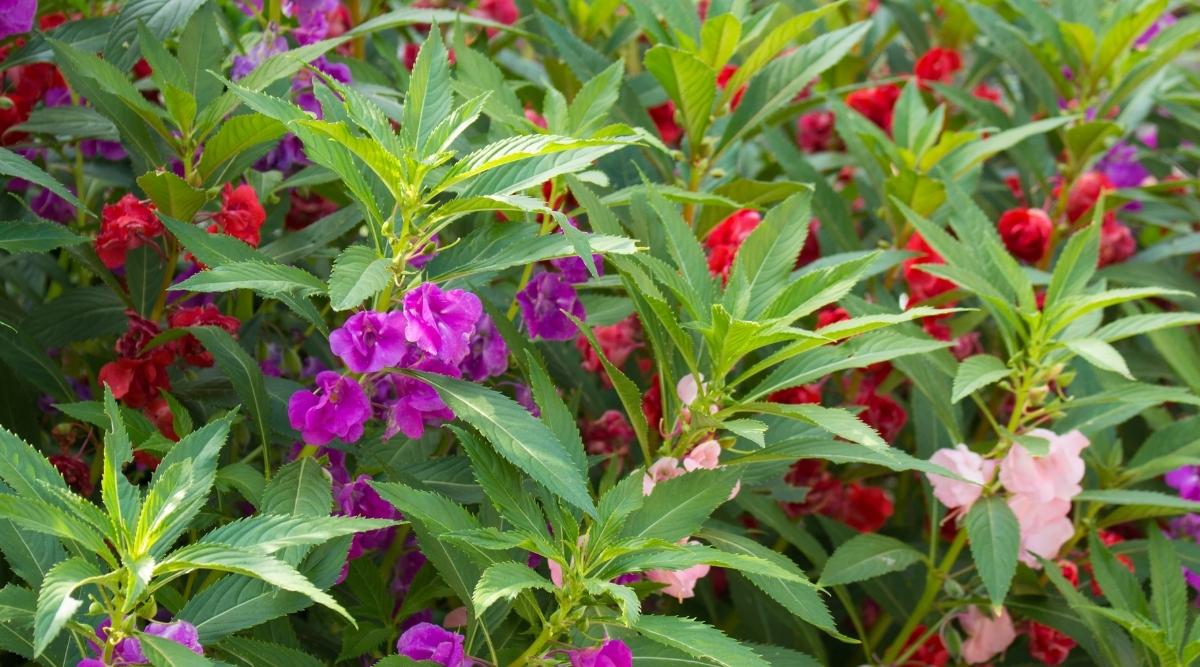jacksondwj.com – Garden Balsam (Impatiens balsamina), also known as Touch-Me-Not or Jewelweed, is a beautiful and easy-to-grow annual flower that adds a splash of color to summer gardens. Native to Southeast Asia, Garden Balsam has been a popular garden plant for centuries due to its bright, cheerful flowers and ability to thrive in warm, humid conditions. It is often grown in beds, borders, and containers, where it provides continuous blooms from early summer to fall. Here’s a closer look at the characteristics, care, and uses of Garden Balsam.
Appearance and Characteristics
Garden Balsam is a bushy, upright annual that typically grows 12 to 30 inches tall, depending on the variety. It has fleshy, slightly translucent stems with lance-shaped leaves that are toothed along the edges. The flowers, which bloom in vibrant shades of pink, red, purple, white, and sometimes bi-colored, are large, showy, and resemble small camellias or roses. They grow along the stems in the leaf axils, giving the plant a dense and colorful appearance. One unique feature of Garden Balsam is that its seed pods “explode” when touched, scattering seeds around the garden, which is why it’s sometimes called Touch-Me-Not.
Planting and Growing Conditions
Garden Balsam thrives in warm, sunny to partially shaded locations with well-drained, fertile soil. It is a heat-loving plant and does well in tropical or subtropical climates, but it can also be grown as a summer annual in temperate regions. To plant Garden Balsam, sow seeds directly in the garden after the last frost, or start them indoors 6 to 8 weeks before the last frost date. Once the seedlings are established, transplant them into the garden, spacing them 8 to 12 inches apart to allow room for growth.
These plants are fast growers and bloom within a few weeks of planting. They prefer consistent moisture, so it’s important to keep the soil evenly moist but not waterlogged.
Care and Maintenance
Garden Balsam is relatively low-maintenance and easy to care for. Regular watering is essential, especially during hot and dry periods, as the plant prefers moist soil. Mulching around the base of the plants helps retain moisture and keeps the roots cool. Fertilize Garden Balsam with a balanced, water-soluble fertilizer every few weeks during the growing season to promote healthy growth and abundant blooms.
Deadheading spent flowers isn’t necessary for this plant, but removing faded blooms can help the plant look tidy. Garden Balsam is fairly resistant to pests, but it can occasionally be affected by powdery mildew, especially in humid conditions. Ensuring good air circulation around the plants can help prevent this.
Uses in Landscaping
Garden Balsam is a versatile plant that can be used in a variety of garden settings. It works well in flower beds, borders, and cottage gardens, where its bright, cheerful flowers create a colorful display. Garden Balsam also thrives in containers and window boxes, making it an excellent choice for patios and balconies.
Because of its ability to self-seed, Garden Balsam can naturalize in the garden, coming back year after year in suitable conditions. Its long-lasting blooms make it a great addition to cutting gardens, where the flowers can be harvested for indoor arrangements.
Conclusion
Garden Balsam is a charming and easy-to-grow annual that brings vibrant color and old-fashioned appeal to summer gardens. Its showy flowers, fast growth, and low-maintenance nature make it a favorite for gardeners looking to brighten up beds, borders, and containers. Whether you’re planting it in a sunny spot or a partially shaded garden area, Garden Balsam will reward you with continuous blooms throughout the summer, adding a cheerful and lively atmosphere to your outdoor space.
